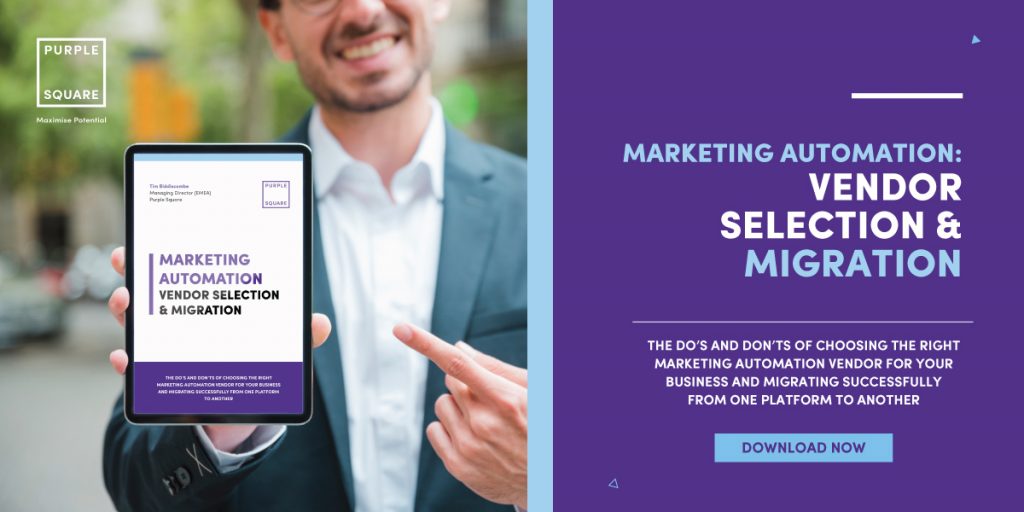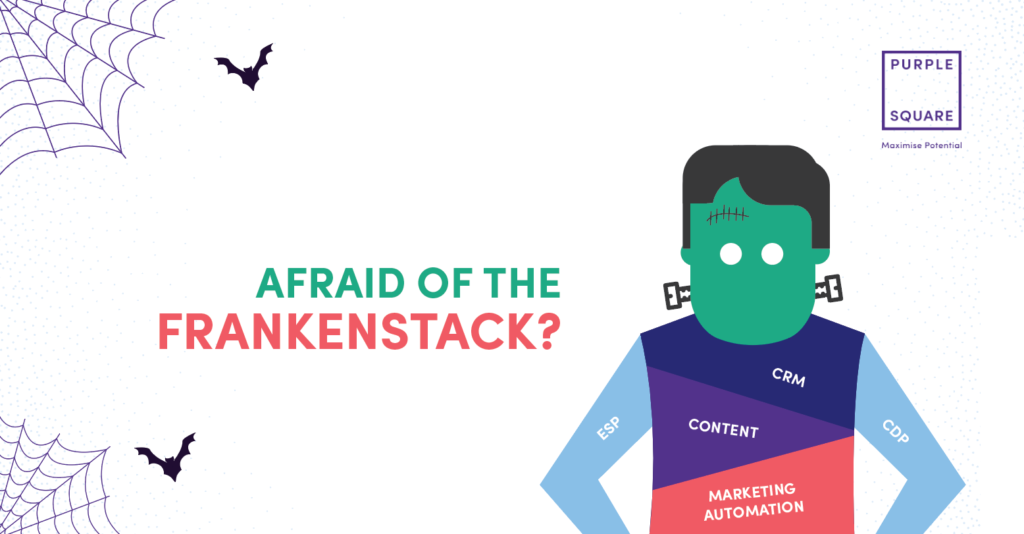How to successfully switch Marketing Automation Platforms
MIGRATION CONSIDERATIONS
How to successfully switch marketing automation platforms. So, you’ve made the decision to move Marketing Automation platforms, and selected a vendor to move to. Well done! But the hard work isn’t over yet…
The migration activity is an often-overlooked element of moving to a new technology, and consequently is tackled as an afterthought, under-planned, under-resourced and can end up incomplete as time on the old platform before license deadlines run out and kit is decommissioned. On this point, it might seem obvious, but it’s worth stating and restating that when changing your marketing automation provider, timing is everything. You don’t want to be paying for two platforms (old and new) for a long period of time. A small amount is inevitable and unavoidable, for the migration work we are discussing here, and for testing and signoff of processes and functionality, e.g., your customer journeys and marketing programs of activity.
For an organisation to successfully migrate their marketing automation technology to a new provider, key areas of functionality must be explored in detail, audited, and documented. This can actually take place in parallel with the selection process, as in no way does it rely on selecting an actual vendor to proceed with.
Use of the incumbent marketing automation system will no doubt have grown a little organically, which I should add is perfectly normal, and to be expected, at least until the entire workforce is replaced with robots. In the high-pressure world of modern marketing, problems are solved, and needs met in the most expedient manner, which introduces a concept well known in IT, technical debt. A key functional area of assessment therefore is non-marketing activity being undertaken within the marketing platform, which can include data processing, manipulation and other ETL activity. The destination migration for this may not actually be the new marketing automation vendor if you want to start with a nice clean slate, but instead other destinations and data integrations could be considered.
CMS
If you use your marketing automation platform to host your content (as opposed to a fully fledged CMS), that will all need auditing, exporting and importing into the new platform. This can be no small feat in a mature marketing environment. Such assets could number in the hundreds or even thousands, not to mention the different shapes and sizes that might be required for different uses (e.g., banners, hero images, mobile-friendly). Some clients I know require a dozen or more versions of every single asset to cover all eventualities.
If you have a third-party CMS, then you should of course ensure that there is a supported integration with your desired marketing automation platform before you sign on the dotted line. All the major players tend to support each other’s technology of course, but if you are going with a more niche provider either for your marketing automation or existing CMS, or perhaps if it is home grown by some bright spark in IT, then you may be in for turbulent times when you attempt to link up the two.
Workflows and Rulesets
Once you have an idea of your approach for content, the next big-ticket items are workflows and rulesets.
Workflows are the backbone of any marketing automation system; they vary from vendor to vendor, but they detail the logical groupings of your customers for inclusion in marketing activity. They could be standalone segments, customer groups, campaigns, or fully fledged customer journeys. In each of these categories exist the simple and the highly complex, the batch, triggered or real-time scenarios.
Rulesets are the reusable marketing objects that define your key logic to be used time and again. Common examples include country and language logic for personalisation splits into different languages, and the tried and tested RFV (Recency, Frequency & Value calculations) that so often determine offer value to the consumer. The overwhelming benefit of using rulesets is consistency; everyone in the business is speaking the same marketing language, figuratively speaking, when they use common rulesets. Workflows and rulesets will of course need documenting, potentially taking the opportunity to review and ensure they are still accurate and viable, and migrating into the new system.
Customer journeys need particular care during a migration as these live, always on programs require careful planning around switch off and switch on in the old and new system.
Have you thought about your Contact Preferences?
Many modern companies serious about their customer satisfaction, not to mention GDPR obligations, operate preference centres. These are where a customer gets to choose from a matrix of preferences by channel and product, which gives you the maximum ability to reach your audience, while giving them the maximum flexibility to choose to be contacted or not about any specific area.
While it can be tempting for the cynical marketer to add additional product areas, not to mention additional channels to a customer’s preferences, care must be taken to not automatically enrol customers in new areas unless there are legitimate interests, as nebulous a concept as that can be. I recall one retailer telling me once many years ago that they defined interest in beauty products by the logic “has purchased toothpaste”, which is a very low bar if you ask me, but who am I to judge.
Nevertheless, managing your exclusions and opt-outs seamlessly while transitioning to a new system is utterly essential. Other than general confidence in the new platform, this is the single biggest reason we always recommend a period of parallel running, so business critical processes like these can be tested end to end. Once you are happy with the testing, a cutover from old to new can happen at a time when all hands are on deck and eyes are glued to screens like they are in Mission Control watching the launch; and it’s definitely not 4pm on a Friday afternoon, the classic time for terrible things to go wrong with change management.
Old System / New System
One of the primary reasons to switch up your marketing automation vendor is to gain access to new functionality that leverages your strategic goals. Since these shiny new features are your focus, it can be very tempting to implement them on day one. This can introduce significant risk to the migration process, as for the purposes of parallel running, how can you compare like for like if you’ve dived headlong into new functionality that cannot be replicated in the old system.
You will get to the new functionality soon enough, but we always recommend having completed migration and decommission of the old technology before embarking on the new shiny features. We strongly advocate a crawl-walk-run approach to migration exercises, even if you already have the new prerequisite skills, having hired them in especially, or sailed through the eLearning yourself to get up to speed as quickly as possible. Exercise caution with the latter of course, as many times we have seen knowledge confused with experience, which can result in painful object lessons, though wisdom is usually the light at the end of that particular tunnel.
Are you in the process of migrating your Marketing Automation platform? Download our eBook: Marketing Automation: Vendor Selection & Migration.
Like what you see?
Subscribe to our newsletter for customer experience thought leadership and marketing tips and tricks.






